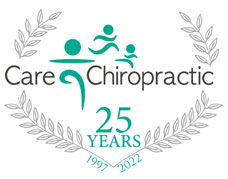“Did you know chiropractic was founded by a guy who used magnets to try to heal people?” Statements like this hold some semblance of fact but are not helpful in understanding chiropractic care, today. Yet, does a weird origin mean the whole regulated medical field has no value?
History happens in time and does not occur in a vacuum; ideas are refined, or developed, and better understood as time progresses, allowing for different minds to focus on a concept. As time progresses, things discovered in one arena of science affect a wide variety of other arenas. Correct theories are better explored and evaluated, incorrect notions are tossed, and more accurate models are established and demanded (and made possible).
These principles of awareness have wide benefits for insight into virtually any system. With that in mind, let’s take a look at some key aspects of the history of chiropractic care.
Strange Origins – Contextualized
It’s true the founder of Chiropractic, Daniel David Palmer, held to some unscientific understandings of human health. Still, it’s vital to indicate that many people held to such understandings in the 1800s. Also worth mentioning is that History.com states the first person to observe x-rays was in 1895 (the same year Palmer began investigating chiropractic). Bear in mind that x-ray exams were not widely available for some time, but X-rays and chiropractic are very related today.
One Chiropractor’s Call for Reform
Throughout the early 20th century, chiropractic received much-needed healthy, critical pressure from governments and other specialist physicians. Under this pressure, certain leading chiropractic practitioners sought to remove remnants of unscientific ideology from the practice. One such leader, Dr. Samuel Homola, quoted himself in a 2006 article from a piece he wrote in 1963 designed to emphasize reform to the growing and complex field of chiropractic:
“Unless the chiropractic profession as a whole[…]earns reciprocity with other healing professions, under the guidance of medical science, there will be no justification for the existence of chiropractic when an adequate number of medical specialists and medical technicians make scientific manipulation available in a department of medical practice…”
People like Dr. Homola recognized that if the chiropractic field continued to be misunderstood and/or misapplied by its own practitioners, it would be rendered irrelevant.
An Answered Call for Self-Regulation
In the same 2006 article, Dr. Homola also wrote that other medical fields, such as physical therapy, are utilizing chiropractic techniques. For Dr. Homola, writing as a chiropractor, chiropractic care can be a vital component of treatment if it is taken seriously by chiropractors:
“It matters little who does spinal manipulative therapy as long as it is appropriate and evidence-based. There can be cooperation between chiropractors and other practitioners of manual therapy if everyone works under the common denominator of science and if treatment methods are standardized.”
Canada seems to have taken Dr. Homola’s remarks seriously. Take a look at the Canadian Chiropractic Association’s webpage concerning Regulation & Education in Canada. Also worth exploring is the CCA’s webpage titled “The Link Between Research & Practice.”
The medical history of Chiropractic has come a long way since 1895 and Daniel David Palmer. Men like Dr. Homola have certainly had an impact on transforming chiropractic’s interesting roots into a flourishing field, even here in Canada.
And that brings you here! Learning about how chiropractic medicine can make a real and substantial change in your life is part of what we encourage for all our patients. Call us today and let’s talk about how our Chiropractors can help you.


